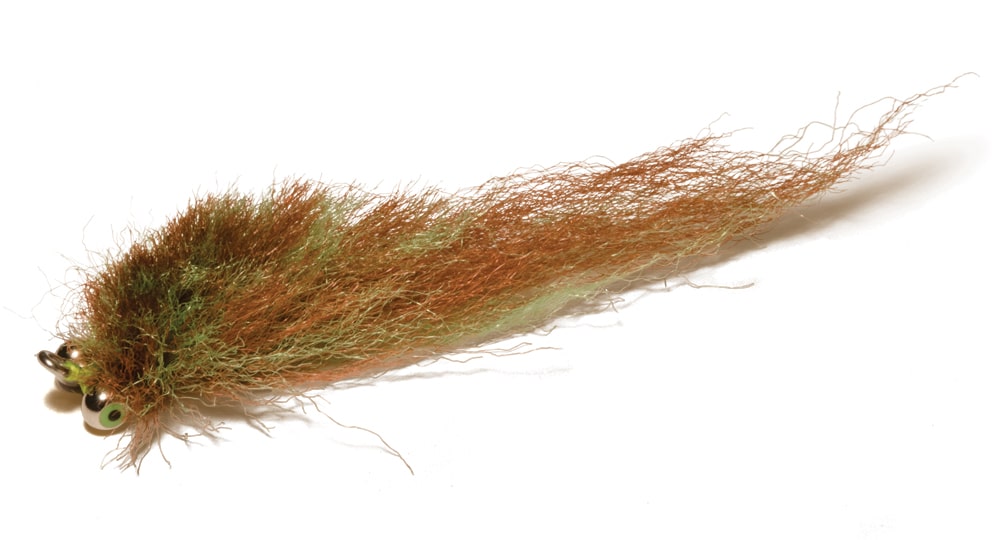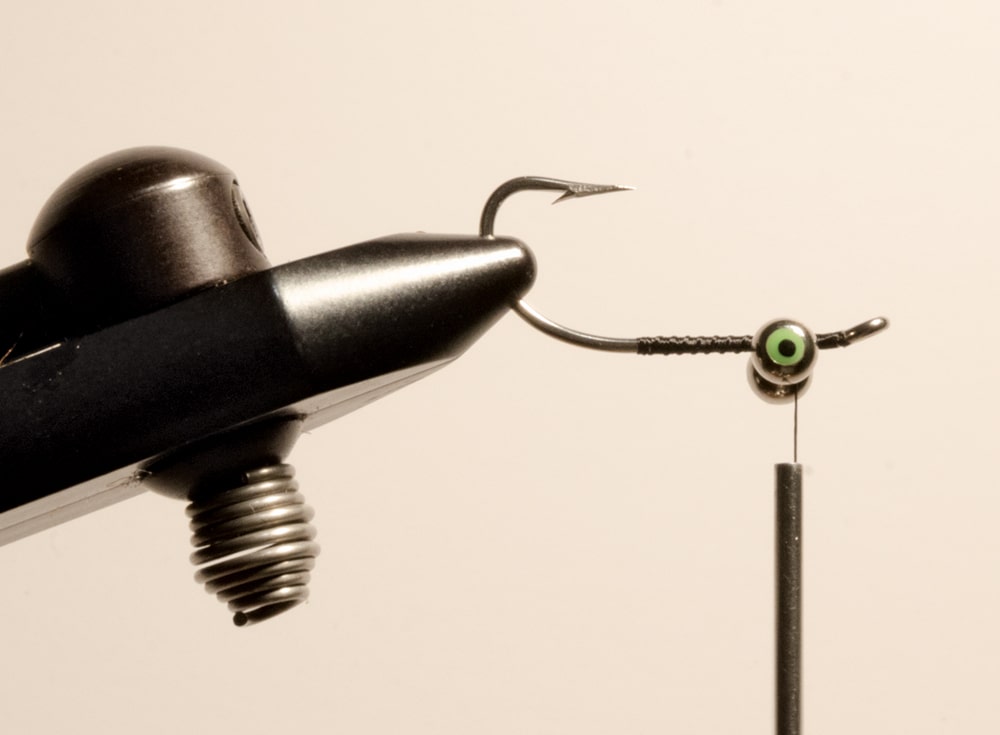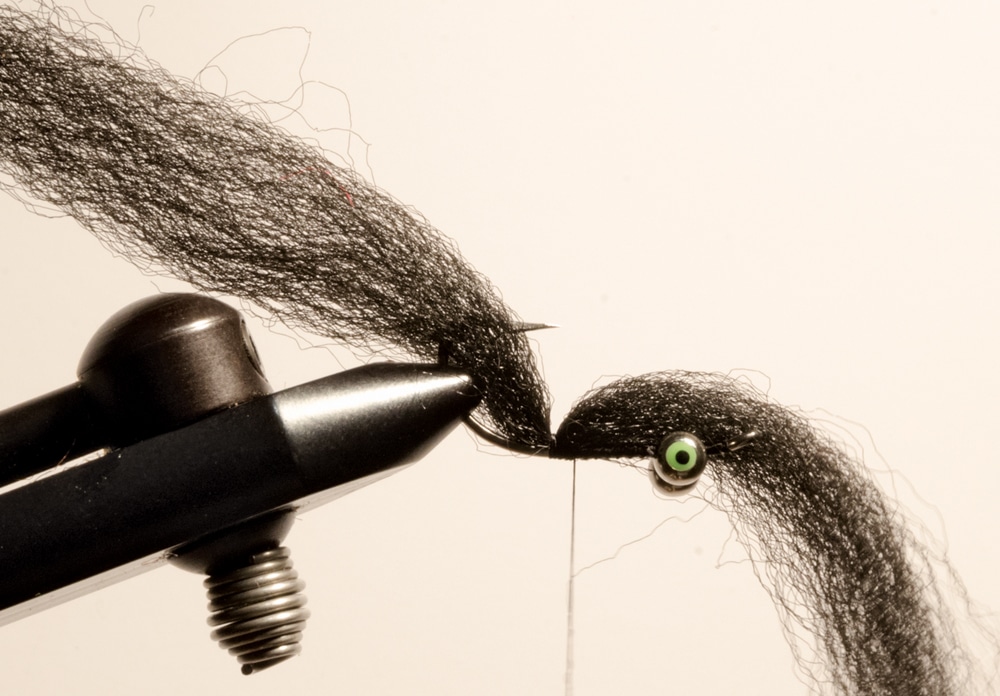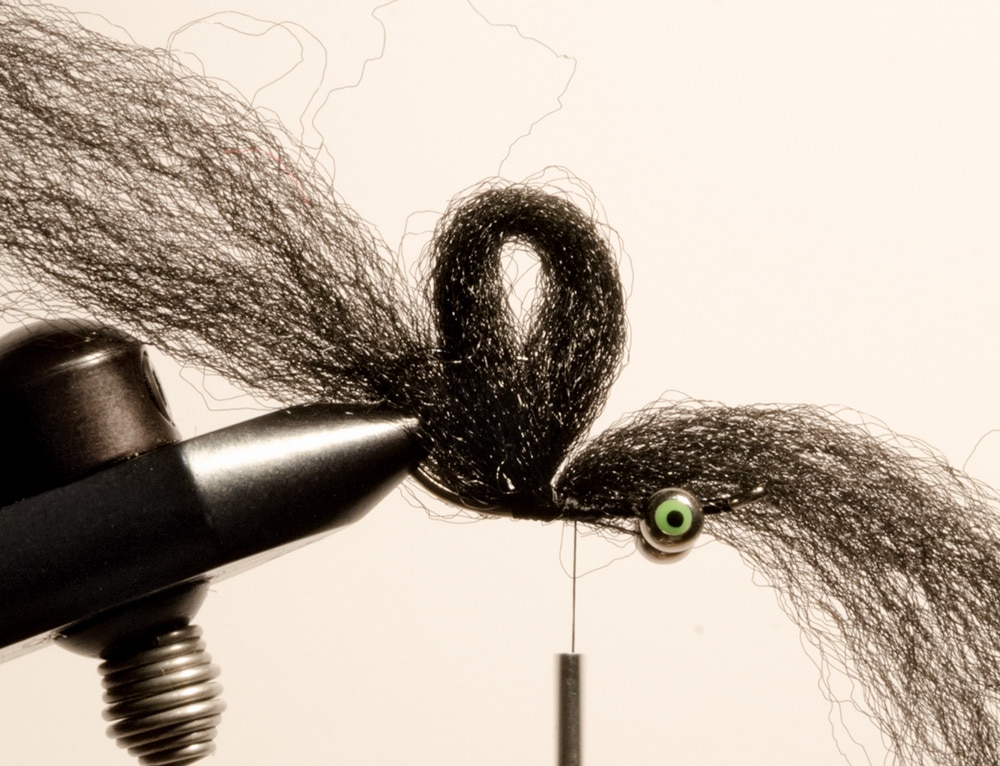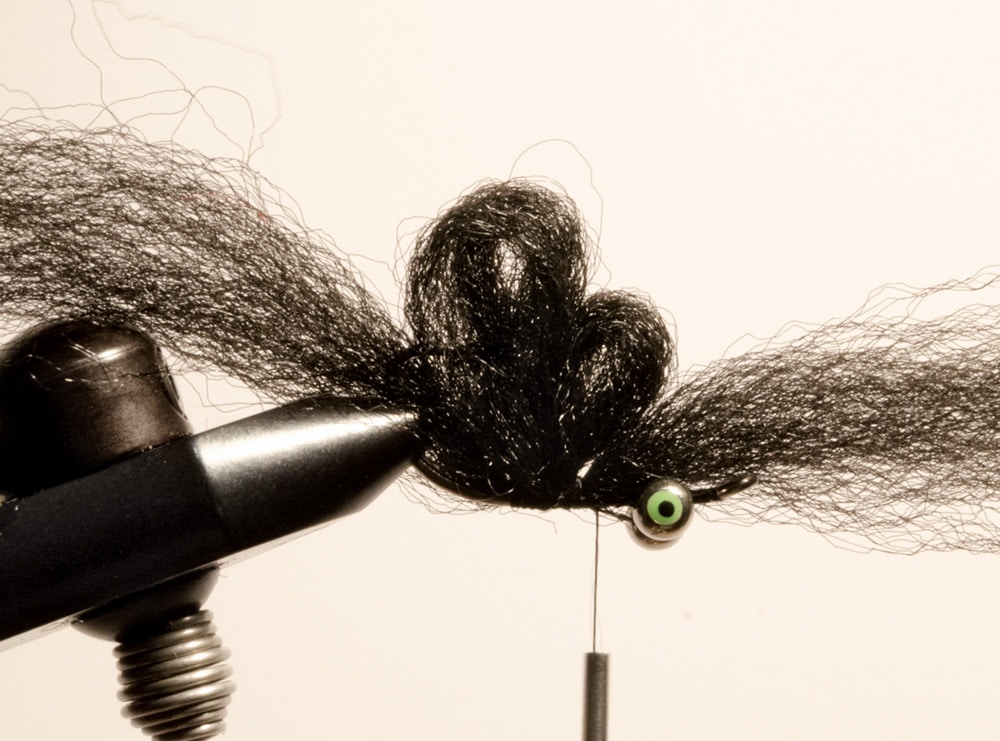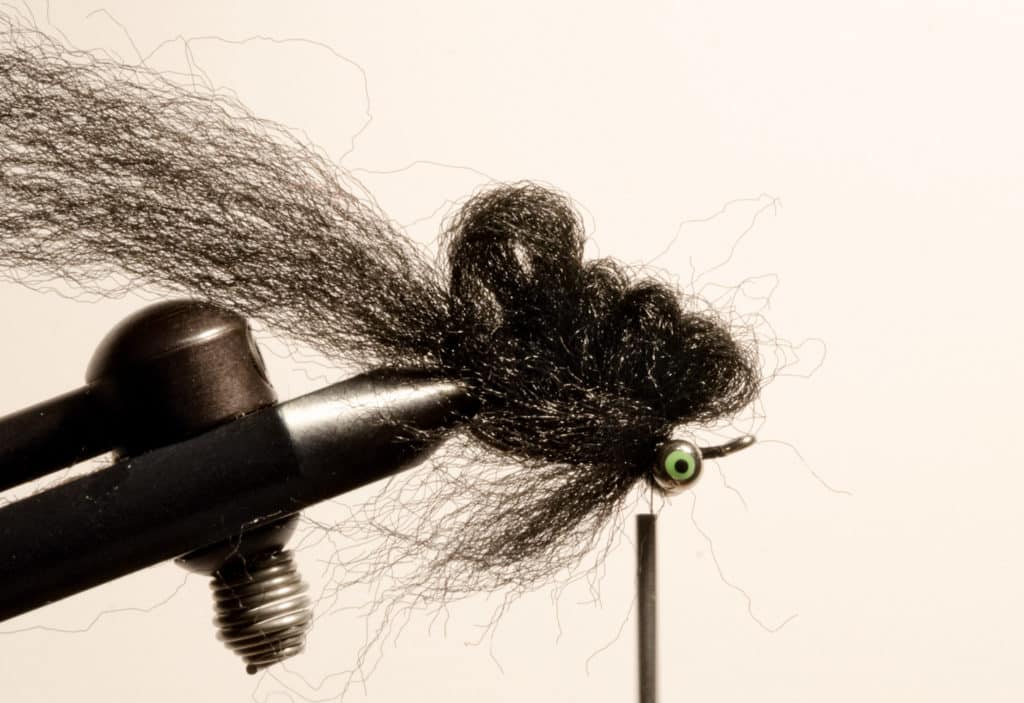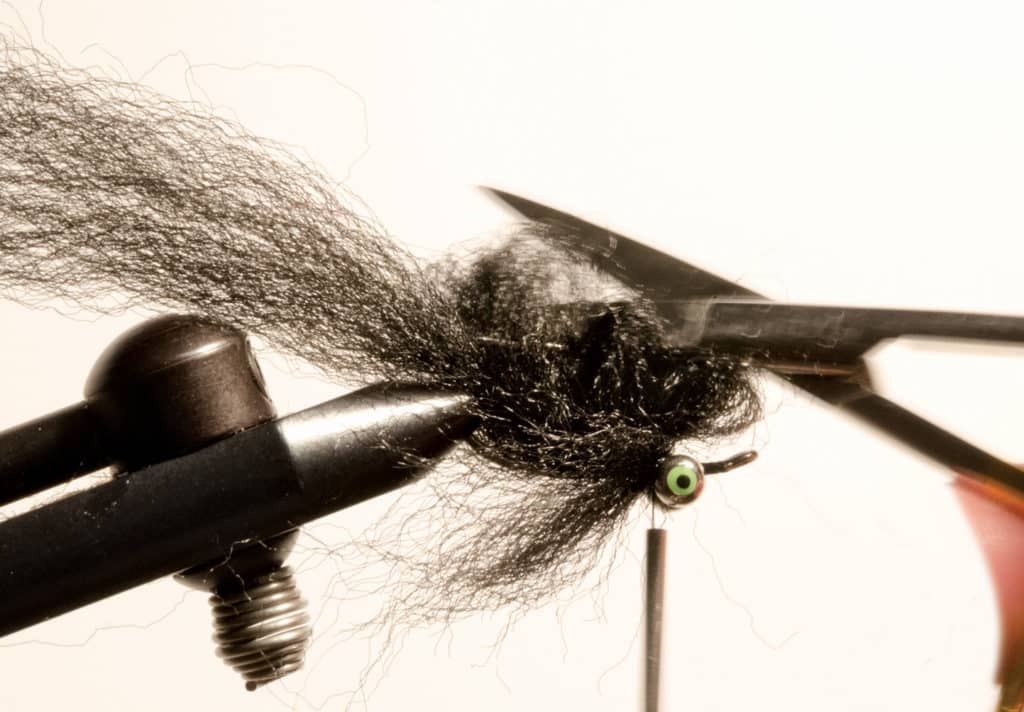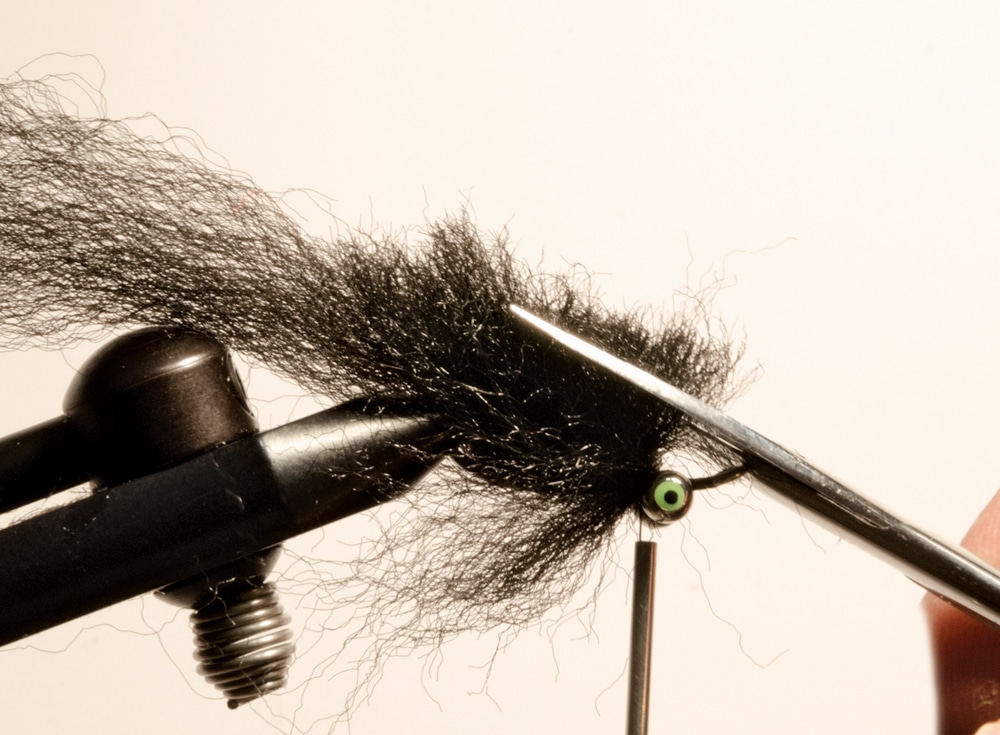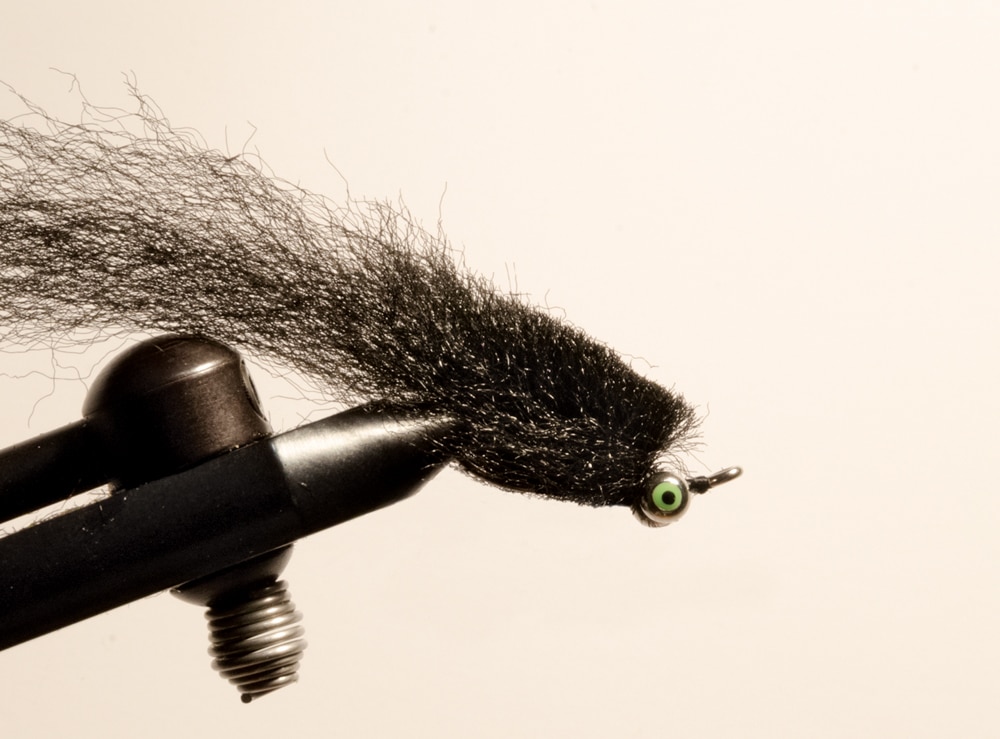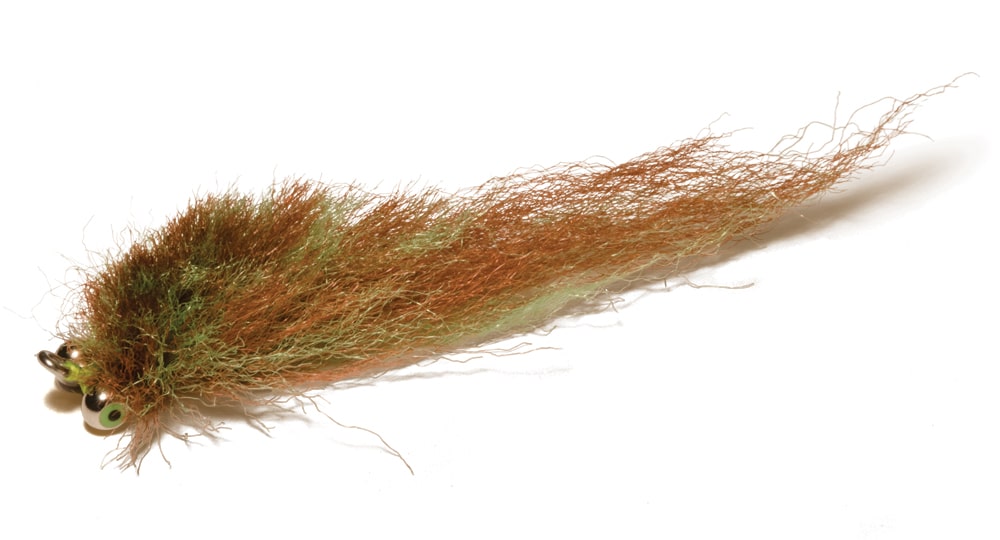
main tie with loops
Above, click through the images for complete instruction. It will take a couple of loop flies to get the feel for how much material is needed. If you are looking to create a very full fly, you may need to thin out the body to prevent the material from hindering hookups. For this, I like to either use thinning shears or cut a groove down the center of the body using small trimming scissors.
There are two kinds of guides out there — the ones who like tying flies and the ones who hate it. As for those who fall into the first category, if they are like me, they love it right up until they have to do it. At that point it becomes work and a time-consuming inconvenience. I like to tie in the off-season or when the weather is bad, not when I have to. And, unlike most river guides, we salty dudes don’t always have a fly shop just down the road to go pick up what we need.
Old-Timer Wisdom
After a decade and a half of fighting this dilemma, a good friend and guide, Capt. Tom Horbey, showed me a method of tying that he developed and has been using for many years that saves not only time but also materials. It’s not so much a new fly as much as it is a new style of tying.
Before getting to the fly or the style of tying, I’ll give you a little background info about this Horbey character, and believe me — he’s quite the character. Horbey grew up in the ’50s in upstate New York with a fly rod in his hand. In the ’70s he grabbed a backpack and hit the road, hitchhiking and fishing all the way into Mexico. Eventually, he came back to the States and made Texas his home. Once he settled in, he took to the water and became one of the first saltwater fly-fishermen the state had ever seen. In fact, saltwater fly-fishing did not start gaining popularity until the late ’80s, and Horbey was out there casting flies long before it was considered cool. His career choice allowed him to spend a great deal of time on the water then, and sometime in the late ’90s he decided to give up on his career as a custom-home builder and dived headlong into the world of guiding.
With years of experience already, he quickly became recognized as one of the most knowledgeable guides in the Lone Star State. But, like every other guide that you may have met, he has his quirks. One being that he does not like to tie flies, at least no more than he has to.
For years he had been telling me about his loop fly and how great it was. I would always just say, “Yeah, yeah, whatever. The flies that I tie work just fine.” And they did and still do. However, what I didn’t realize at the time and what Horbey was trying to tell me was not that his loop fly caught more fish but that it was so ridiculously easy and fast to tie that it bordered on the absurd. For a fishing guide, that’s practically the definition of the perfect fly.
Getting Schooled
One day after we had both gotten off of the water I swung by his house to say hello, and he was sitting at the vise. He informed me that he needed about 10 minutes to knock out a half-dozen flies, and I’m thinking, yeah, right, whatever, it is going to take him at least a half-hour; so I got myself an adult beverage, sat down on the couch and started looking at a fishing catalog. When he finished and plopped down six damn-fine-looking flies in front of me in less than 10 minutes, he had my attention, and I asked, “How in the hell did you do that?”
He just smirked and said, “I told you that you young punks ought to pay more attention to us old guys — we might just teach you something.”
The beauty of the loop fly or loop style of tying is that it is simply the most efficient way to tie with synthetics such as EP Fibers. Even better is that there is absolutely no waste of materials, which leaves virtually no mess. For the fishing guide, this means keeping the box full of effective flies without sacrificing too much personal time. For everyone else, it’s a ridiculously easy tying style to learn that will allow you to create a variety of baitfish, crab and shrimp imitations that all ride hook up. And, like the One Fly pattern that I wrote about several issues back, with minor tweaks here and there you can utilize this style of tying and adapt it to any and all situations that you might encounter while pursuing a number of different species. Things that can be done are as simple as adding extra weight, flash or a foam or deer-hair head or just adding markings with an indelible marker. Another aspect of this style that I truly love is that flies can essentially become weedless by varying the amount of material used.
While I have tried using different materials, including natural materials, I have found that synthetics tend to work the best and that EP Fibers are by far my favorite. The importance of the material chosen lies in that it must be pliable in order to create the tight loops necessary to create the body of the fly.
Tying Style
The simplicity of this tying method is what makes it great. All you have to do is invert the hook in the vise, tie on bead chain or lead eyes, or even just a lead wire keel, and then securely tie in the material inside the gap of the hook and just inside of the hook point. From there you begin to form loops with the material and secure each one tightly and then move forward. Once you have run out of room for more loops, simply cut off the excess material and then run scissors through and clip each loop. All that is left is to trim and dress up the fly with a marker and to go fishing.
Tip: As is the case with any fly, it will take a couple of loop flies to get the feel for how much material is needed. If you are looking to create a very full fly, you may need to thin out the body to prevent the material from hindering hookups. For this, I like to either use thinning shears or cut a groove down the center of the body using small trimming scissors.
